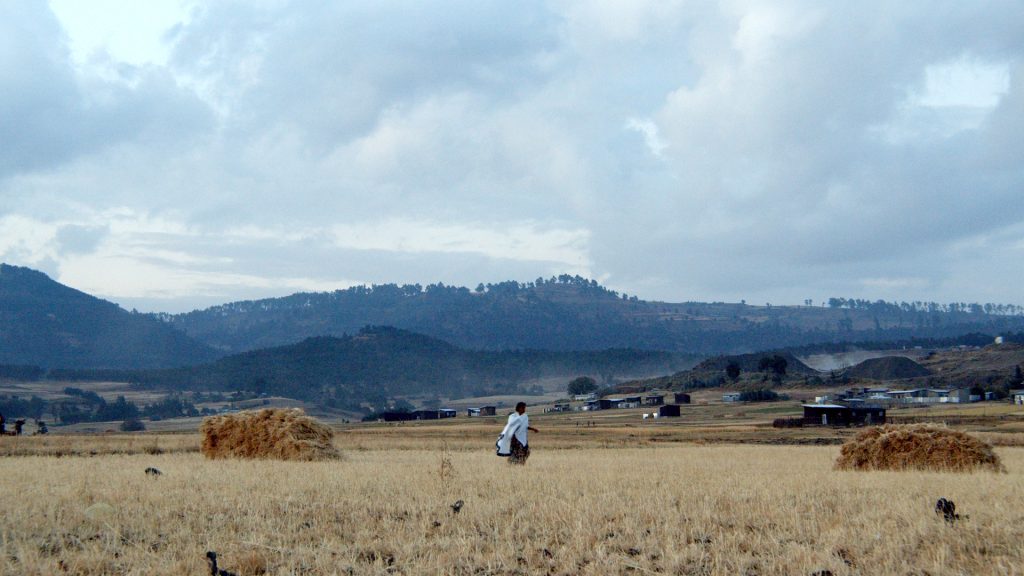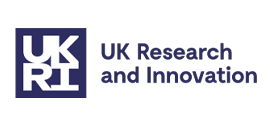
Image depicts an Ethiopian woman walking through fields. This is a snapshot from the film Tidar produced by Project dldl/ድልድል. Copyright: Project dldl/ድልድል.
In the current essay, guest contributor, Batseba Seifu, discusses how women and girls with disabilities in Tigray bear the disproportionate burdens of war, such as inaccessible infrastructure, disrupted aid and unrelenting caregiving duties, while also facing entrenched stigma, unsafe work and living conditions, and minimal enforcement of protective laws. She highlights the devastating consequences of data gaps and unavailable services and argues for inclusive recovery strategies that centre on women and girls with disabilities, including better data collection, accessible services, psychosocial support and ensuring their meaningful participation in reconstruction efforts.
War is generally described in reference to its direct consequences. But behind tangible losses exist less visible, longer-term effects that never quite reach the front pages of news reports. One such hidden effect in Tigray, Ethiopia, has been on girls and women with disabilities, who bear the brunt of war disproportionately. At a household prevalence of disability of 30.1 percent, significantly higher than the national average of 20.5 percent, the region offers a stark example of how war exacerbates existing inequalities and compounds layers of vulnerability.
Methodology
The current essay relies on survey data, interviews and a desk review undertaken in August 2025 to explore how women and girls with disabilities in Tigray were impacted by the recent war. The sample included 23 respondents (16 men and 7 women). Respondents were distributed in the following age group ranges: 35–45 years old (11 respondents), 18–35 years old (8 respondents), 45–55 years old (2 respondents) and over 55 years old (2 respondents). Two men and two women (4 respondents) in the sample reported that they lived with a disability. Of those surveyed, 18 resided in Tigray, two were in Ethiopia but not in Tigray, and three were outside of Ethiopia. The survey was administered in Tigrigna in August 2025 using SurveyMars, a free survey administration tool. Responses were translated in English for analysis.
Although the sample size and composition should not be considered representative of the overall population, the study provides important insights into the lived experiences of Tigrayan women and girls and individuals with disabilities. The survey approach taken adhered to the highest ethical standards, obtaining the participants’ free consent for participating in the research and maintaining their anonymity, except in the case where interviewees were leaders of civil society organisations, who gave their formal consent to be identified by name and institution.
When war multiplies women’s burdens
The war in Tigray undoubtedly exacerbated the burdens carried by women and girls with disabilities. Gender role expectations persisted during the war, regardless of any physical or mental limitations that girls and women may have experienced, which placed more burden on women than men with disabilities. One respondent illustrated this as follows:
“Men with disability do not have to do so much, whereas women are still supposed to clean, cook, wash, care for family, etc. Women have monthly periods which make it difficult too. No proper assistance. If they have fistula, most likely they urinate in their clothes, and finding pads is troublesome.” (August 2025)
This points to a broader pattern: home and caregiving responsibilities, which typically fall on women to carry, persisted during the war despite disability. For women with disabilities, these expectations can become crushing, especially when combined with the absence of accessible infrastructure, decent housing and critically needed humanitarian assistance. The destruction of transport infrastructure, the shutting down of aid supplies and the disruption of medical supplies during the recent war meant that even simple tasks, such as obtaining food, water, or hygiene products, required from girls and women to travel long distances and exist in hostile environments.
Legal promises, everyday gaps
In principle, Ethiopia has in place laws to protect people with disabilities. Proclamation No. 568/2008 prohibits discrimination in employment and stipulates reasonable accommodations in employment contexts. However, in my experience, this law has rarely been actualised in war-affected Tigray.
Survey and interview participants said that deeply entrenched beliefs, under which disability is often superstitiously viewed as the outcome of a “curse”, contribute to the persistence of stigma. This social perception discourages families from advocating for their daughters’ inclusion in school. If any opportunities for employment exist, the work environment is not safe or appropriate for women with disabilities, exposing them to harassment and exploitation. One survey respondent’s remark is illustrative: women, with disabilities are frequently placed in “unsafe workplaces, i.e., places that expose them to sexual assault, lack of responsibility, lack of self-determination and vulnerability to sexual exploitation.” (August 2025)
This disconnect between law enforcement and the lived experience of people on the ground was exacerbated during the war and continues to do so after the war by the deliberate destruction of infrastructure that could, under enabling conditions, build bridges for people with disabilities to participate in work life and society. As such, the protections offered by legislation are inadequate or unenforced.
The data deficit and its consequences
Appropriately disaggregated information is the foundation of effective policy and the allocation of humanitarian aid. Yet in Tigray, like other regions of Ethiopia, data that intersects disability, gender and displacement do not exist or are incomplete.
Survey respondents largely agreed that this lack of targeted data has real-world consequences: 16 out of 23 survey respondents said there had been no notable change in recent years and the rest noted that even where data are being collected, this rarely translates into actionable support. A female survey respondent with at least one disability explained that girls and women with disabilities tended to rely on traditional responses, such as holy water, especially since formal services were inaccessible or unavailable. Without explicit, up-to-date information, interventions risk being misaligned with people’s actual needs on the ground, reinforcing a cycle of exclusion and ineffectiveness.
Layers of risk: who is most affected?
Different vulnerabilities have been produced by the war and the continued unconstitutional occupation, and these have different effects on girls and women with disabilities.
Sexual violence survivors: Gang rape, forced pregnancies and the insertion of foreign objects to cause the utmost damage to girls’ and women’s sexual organs are just a few examples of the pervasive and systematic nature of conflict-related sexual violence (CRSV). Seeking justice or medical attention is more difficult for survivors with disabilities, and the additional layer of stigma makes them feel even more excluded. One respondent to the survey illustrated the permanent trauma of sexual violence below:
“The mental scar of sexual violence at war is a lifetime scar that never heals… there is no appropriate counselling, no confidentiality; very likely people will know and hear your story and expose you to further attack and humiliation.” (August, 2025)
Women who have been internally displaced and have disabilities: Services for people with disabilities are rarely offered in displacement camps. Genet Kidane Gebretsadik, Executive Director of the Women with Disabilities Development Association in Tigray, has previously observed that “gender-based violence is present in displacement camps.” Goitom Haileselassie, the leader of Tsilal Civil Society Western Tigray (ፅላል ምዕራብ ትግራይ), explained that women were left doubly marginalised after being sexually violated by occupying forces, in the aftermath being divorced by their husbands or excluded by their communities.
Isolation increases vulnerability for rural women with disabilities. Many rural women still lack support because transportation networks are disrupted, and aid is concentrated in urban areas. One respondent highlighted the issue as follows: “Most of them outside the urban areas have not received assistance. The obstacles are financial and social exclusion.” (August, 2025)
Former combatants with war-related injuries: Female members of the Tigray Defence Forces who suffered injuries during the war frequently experience homelessness, unemployment and a lack of medical or psychological support upon reintegrating in society. They are also, at times, excluded from assistance programmes because of their connection to the war. A respondent explained: “TDF members are very isolated as they are viewed as politicians, not fighting for their rights and their people.” (August, 2025)
Daily life under strain: health, education and economy
In Tigray, access to healthcare is still very low. Key hospitals suffer due to a lack of skilled employees and inexistent or low equipment and medical supplies. There are very few specialised services for mental health or trauma recovery, especially for women with disabilities. Genet Kidane Gebretsadik, Executive Director of the Women with Disabilities Development Association in Tigray, reported the following:
“Women with disabilities have compounded pain and are not heard. Before the war, sexual violence usually happened in rural areas, and families often forced marriage. Now, women who face such violence are left in the streets.” (August, 2025)
Education has also been severely disrupted. According to reports, during the war, 88 percent of classrooms, 96 percent of desks, and 95 percent of blackboards were damaged or destroyed. Girls with disabilities have been largely excluded due to a lack of inclusive learning resources and qualified teachers. A perception that girls’ education will not bring significant return of investment and a fear of social disapproval may lead families in extreme poverty to choose to keep their daughters at home.
An additional layer of exclusion is created by economic insecurity. Inaccessible transportation, discriminatory hiring practices and a dearth of workplaces that are disability-friendly are some of the obstacles that prevent women with disabilities from entering the workforce. One respondent summarised these challenges as follows:
“It is difficult from recruitment to the lack of stairs, toilets, seats, traffic signs, or crossings conducive to people living with disabilities. Transport services are the biggest problem.” (August, 2025)
Reflections on recovery and inclusive rebuilding
The question of how to move women and girls with disabilities from the periphery to the forefront of reconstruction efforts remains unanswered but it is an urgent one as Tigray starts to negotiate a precarious recovery. The current evidence, as delineated above, points to numerous interconnected needs that we must carefully consider.
Firstly, we need to address institutional, structural and physical access barriers. This requires ensuring that women with disabilities, including those who have survived sexual violence and those living in rural and displaced areas, receive essential services, cash transfers and humanitarian aid.
Secondly, enabling girls’ and women’s involvement in decision-making is essential. Through participation in local councils, reconstruction committees and organisations for disabled people, women with disabilities should be empowered not only to benefit from programmes but also to shape them.
Psychosocial support and mental health stand out as critical priorities. Respondents frequently talked about the trauma of displacement and violence that persists, with few options for recovery being offered to them. Community-based rehabilitation facilities and more qualified counsellors are urgently needed.
Lastly, data collection must move beyond mere token efforts. Even well-meaning policies will continue to fall short of achieving their aims in the absence of precise, disaggregated data. This data should be based on the lived experiences of the local community rather than follow top down principles.
About the Author

Batseba Seifu is the cofounder of GEMTigray, a movement for the social, economic and political empowerment of women and girls in Tigray. She has a Masters of Public Administration from New York University and a BA in Law and Justice from Central Washington University. Batseba can be reached at: batsebak@gmail.com
Disclaimer: IDVRM aims to serve as a platform that researchers internationally, especially in the non-western world, can use to disseminate their research. We do our best to ensure that authors who publish with us have conducted their research following the highest ethical standards, with decolonial reflexivity and principles of least harm to participants in mind. We do not require authors to submit ethical documentation, but we ask our authors to provide sufficient information about ethical procedures in their submissions. It is beyond the capacity of IDVRM to verify this information. Authors should be reached directly to respond to questions regarding their research.
Opinions expressed by authors contributing to our blog are those solely of the authors and do not necessarily represent the position of IDVRM, its Director or other team members. IDVRM is comprised of diverse individuals who are encouraged to share their experiences and opinions openly with recognition that other team members may have different experiences and positions. IDVRM does not claim to represent any one community and we understand that belonging to a specific group does not entitle any one of us to speak for all.
AI Use: IDVRM may use AI tools for editing and proofreading purposes to improve language, syntax and grammar. The essay is the original work of the author.
